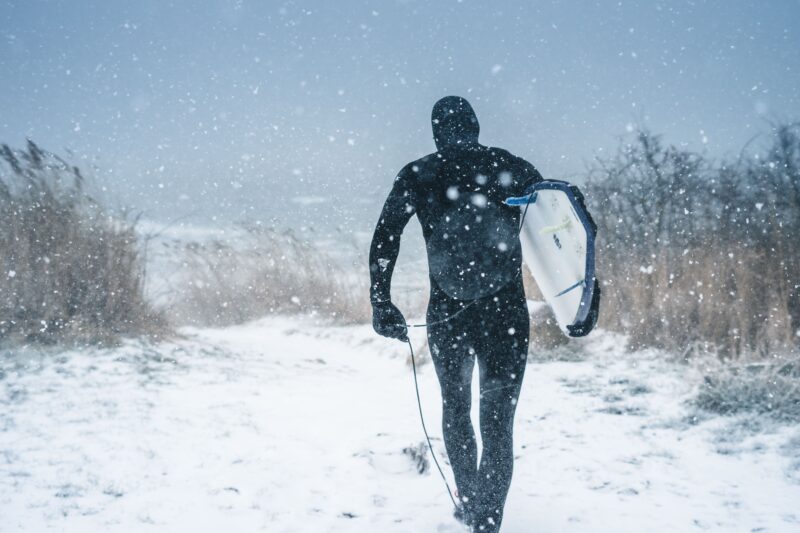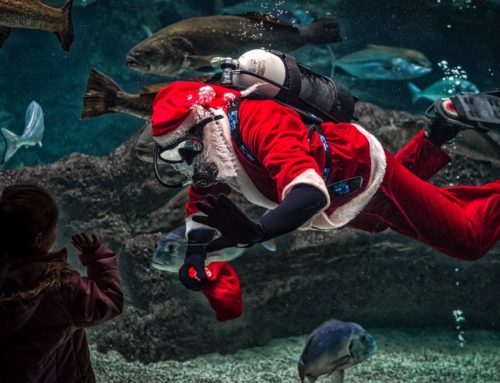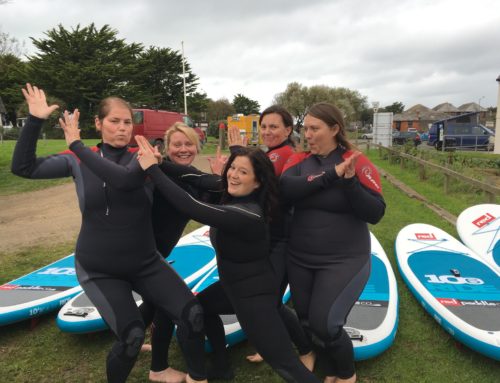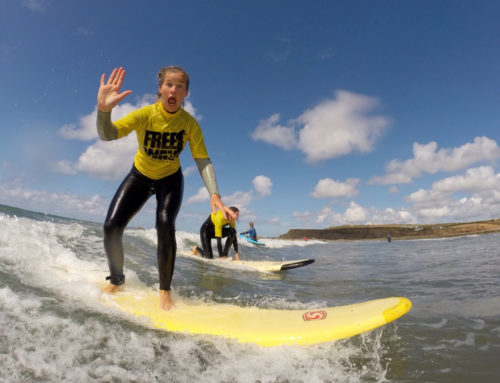Top 10 tips to surfing all year round
You may be reading this blog after coming with us on a Freewave Surfing Experience or maybe you and your family got a taste for adrenalin on a Family Coasteering or SUP Adventure and you are thirsty for more. Whatever your motivation we are stoked you are considering an out-of-season experience with us.
The summer may have ebbed away, the ice cream van has packed up for the season, and a chill is now in the air, but that doesn’t mean you have to get out of the water for nine months. Quite the opposite, in fact. Let me let you into a little secret; this is the best time of year to surf!
Why, you may ask.
The sea is so cold! we hear you shout. Yes, but the waves are good, the beaches are quieter and, until 1st November, there are lifeguards on many beaches including Widemouth, which is a great thing if you are still a novice.

I just love this time of year; I seem to have more time (partly because I run a surf school and the summer is dedicated to that), but also because we all do a little less in the winter months.
Here in Bude you really can surf all year round. And the great surf shops like Zuma Jay and Bude Surf Cabin, and surfboard shapers like House of Cre8tion, are open all year so we can get the right rubber and wicked winter set-up.
Now, on to those tips…
1. Eat an hour before you surf and drink water (warm up the inside first)

Think slow-release food such as porridge, overnight oats or if you must then a big breakfast. Coffee and caffeine can dehydrate you and give you a rush of energy then a dip, so you are best saving those for post surf. Why not pop a flask of soup or tea in your car or van for when you get back?
2. Make sure your kit is dry and start off warm (no one likes getting into a damp, cold wetsuit)
Get into the habit of caring for your kit. It will last you longer and smell so much nicer. Wash your kit with fresh water and grab a solid wooden hanger to dry it on. Fresh water dries quicker than the salt water from last week’s surf session. If your wettie is a bit smelly add some tea tree and lavender oils in the wash (in a bath) which have antimicrobial properties and will leave it smelling sweeeet!
Pre-surf, warm your suit up slowly with a dry heat. If you have a van then consider putting a heater or wood burner in – just remember to turn it off before you head out. And whatever you do, don’t put your wetsuit in the tumble drier!
3. Warm up (cardio is better than static stretching, so go for a run up the beach)

No, I know you won’t feel like it and you’ll want to jump out of your vehicle and into the sea, but if you want to stay in the water and catch some decent waves then you need to prep your body as well as your kit. Chances are it will be a little on the windy side so static stretches are going to end up making you colder and risk injury. A short run is the best idea.
4. Pick a good time of day (we operate 2 hours after high and 2 hours after low tide. This is the best time to surf Widemouth Bay)
As much as a ‘dawnie’ may be appealing, it is the coldest part of the day. We recommend the middle part of the day, if the tide allows. That way the air temperature is on your side even if the sea temperature isn’t!
5. Gloves & boots (you will only really need boots from Nov onwards and gloves from Dec onwards)
It’s basic physics; we lose most of our heat from our head, hands and out feet. So if you keep those extremities warm then you’ll probably enjoy yourself more and stay in the water longer.
We recommend C-Skins Hotwired 5mm Lobster Glove available at Zuma Jay. For us, though, boots are more important.
We like the look of this new Heat Moulded Wetsuit Boot. You can buy them from places like Bude Surf Cabin (no website so maybe hit them up in person or on the old Dog & Bone).
6. Hoods (keeps the head warm!)
Hoods divide opinions. Some people feel quite constricted in them and say they feel claustrophobic. They will also impact your ability to hear a little. You have to get a good fit on your suit if you have an integral hood as the hood needs to fit in all the right places. If you go for a hood, give it a couple of goes to work out if you like it and to sort your balance. We recommend Alder Sports. We also know a few people who wear a swimming hat instead of a hood – means you can still hear but get some additional warmth.
7. Winter suit (no, you can never have too many wetsuits!)
How much you spend on a winter suit depends on a few factors: how often you will surf, what your initial budget is and the technical abilities of the suit. There is nothing wrong with an entry level, at least to check if your idea of winter surfing matches your reality. We recommend Circle One wetsuits. Or, personally, I have a Snugg and I couldn’t recommend it more highly.

8. Dry robe (lots of cheaper alternatives out there now)
Dry robes are not to be confused with towelling ponchos! One should be brought on all winter surfs and one should stay firmly at home. A dryrobe is a godsend for changing when it is sheeting with rain or you are stood by a busy road. The market has really expanded in recent years. Do check the one you choose is waterproof, breathable, has some deep pockets, a hood and fits you.
9. Hot water bottle (so many functions and not just for hugging)
Wrap your clothes in it when you go out which keeps your clothes toasty when you come back, and the water can be used as a little shower. Be careful it’s not too hot though!
10. Don’t be a wally (seriously)
Be cautious and careful. If you are less experienced then go with a buddy, someone to make sure you are safe. Don’t stay out too long – listen to your body. Check the tides, the swell and the weather and if it’s a bit iffy don’t risk it. Certainly don’t if there aren’t any lifeguards.
So that’s it. Follow my 10 step plan and whilst you might not manage two hours in the water in the autumn or winter, you will be able to take advantage of those winter swells and you just might be able to feel your fingers and toes!
If you want to get some more experience or fancy an off-season Coasteer then drop me a line.
Peace out!
Robin





















